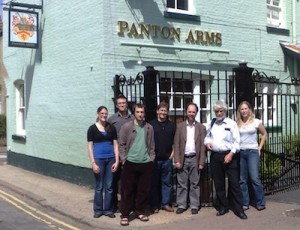
It has become rather fashionable in some circles to decry the complain about the lack of progress on Open Access. Particularly to decry the apparent failure of UK policies to move things forward. I’ve been guilty of frustration at various stages in the past and one thing I’ve always found useful is thinking back to where things were. So with that in mind here’s an anecdote or two that suggests not just progress but a substantial shift in the underlying practice.
I live with a chemist, a group not known for their engagement with Open Access. More than most other disciplines in my experience there is a rigid hierarchy of journals, a mechanistic view of productivity, and – particularly in those areas not awash with pharmaceutical funding – not a huge amount of money. Combine that with a tendency to think everything is – or at least should be – patentable (which tends to rule out preprints) and this is not fertile ground for OA advocacy.
Over the years we’ve had our fair share of disagreements. A less than ideal wording on the local institutional mandate meant that archiving was off the menu for a while (the agreement to deposit required all staff to deposit but also required the depositor to take personal responsibility for any copyright breaches) and a lack of funds (and an institutional decision to concentrate RCUK funds and RSC vouchers on only the journals at the top of that rigid hierarchy) meant that OA publication in the journals of choice was not feasible either. That argument about whether you choose to pay an APC or buy reagents for the student was not a hypothetical in our household.
But over the past year things have shifted. A few weeks ago: “You know, I just realised my last two papers were published Open Access”. The systems and the funds are starting to work, are starting to reach even into those corners  of resistance, yes even into chemistry. Yes it’s still the natural sciences, and yes it’s only two articles out of who knows how many (I’m not the successful scientist in the house), buts its a quite substantial shift from it being out totally out of the question.
But around about the same time something that I found even more interesting. Glimpsed over a shoulder I saw something I found odd…searching on a publisher website, which is strange enough, and also searching only for Open Access content. A query raised the response: “Yeah, these CC BY articles is great, I can use the images directly in my lectures without having to worry; I just cite the article, which after all I would have obviously done anyway”. It turns out that with lecture video capture now becoming standard universities are getting steadily more worried about copyright. The Attribution licensed content meant there was no need to worry.
Sure these are just anecdotes but they’re indicative to me of a shift in the narrative. A shift from “this is expensive and irrelevant to me” to “the system takes care of it and I’m seeing benefits”. Of course we can complain that its costing too much, that much of the system is flakey at best and absent at worst, or that the world could be so much better. We can and should point to all the things that are sub-optimal. But just as the road may stretch out some distance ahead, and there may be roadblocks and barriers in front of us, there is also a long stretch of road behind, with the barriers cleared or overcome.
As much as anything it was the sense of “that’s just how things are now” that made me feel like real progress has been made. If that is spreading, even if slowly, then the shift towards a new normal may finally be underway.


![Reblog this post [with Zemanta]](http://img.zemanta.com/reblog_e.png?x-id=64a967cb-d2d5-4134-9bfa-f6dda491b57b)


